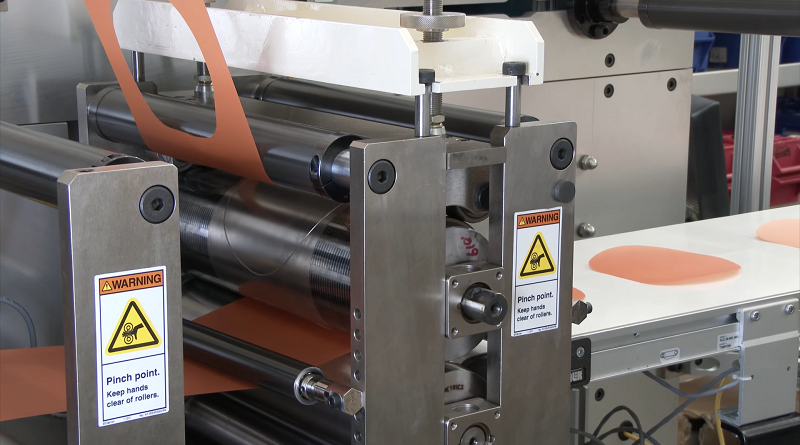Exploring the Unique Benefits of Pressure-Sensitive Adhesives in Rotary Die Cutting
Do you want to create superior rotary die cuts of your products? One material that is often overlooked in the process—pressure-sensitive adhesives—can provide an extra layer of protection and quality assurance.
In this blog post, we will explore how these adhesives help make a rotary die cutting job run more smoothly by increasing efficiency and overall product reliability.
We’ll also explain how the inherently versatile nature of pressure-sensitive adhesives makes them the perfect choice for any type of material or project. Keep reading to learn all about how to maximize the benefits of using PSAs in your next rotary die-cut job!
The Benefits of Utilizing Pressure-Sensitive Adhesives in Rotary Die-Cut
A well-functioning rotary die cutter is essential for smooth and precise operations in various industries. What can make it even more efficient? Pressure-sensitive adhesives These adhesives offer various advantages that can significantly improve the quality and speed of die-cutting processes.
Firstly, pressure-sensitive adhesives allow for better control of the die-cutting process, whether it be for cuts on paper, fabrics, or even plastics.
Secondly, they are easily applied and can be removed without leaving any residue, which is beneficial when it comes to recycling or reusing materials.
Finally, the use of pressure-sensitive adhesives reduces the time and cost associated with traditional adhesives, which require curing or drying time before they can be handled.
Overall, utilizing pressure-sensitive adhesives in rotary die cutters is a game changer for industries looking to streamline their processes and improve their output.
Different Types of Pressure Sensitive Adhesives Available for Rotary Die Cut
When it comes to rotary die cutting, pressure-sensitive adhesives play a crucial role in ensuring precision and accuracy.
The good news is that there are different types of pressure-sensitive adhesives available on the market today.
These adhesives include rubber-based, acrylic-based, and silicone-based ones. Rubber-based adhesives are excellent for high-performance applications such as automotive industries, while acrylic adhesives are ideal for applications that require a strong bond along with resistance to heat and chemicals.
On the other hand, silicone-based adhesives are perfect for applications that require strong adhesion and high-temperature resistance.
The Process of Applying Pressure-Sensitive Adhesives to a Workpiece
The process of applying pressure-sensitive adhesives to a workpiece is a critical step that can make or break the success of a project. This process involves carefully selecting the right adhesive for the material and determining the right amount of pressure to apply when adhering the two surfaces together.
The adhesive must be applied evenly to ensure maximum coverage and prevent bubbles or weak spots from forming. What makes pressure-sensitive adhesives so versatile is their ability to adhere to a variety of surfaces, including paper, plastic, and metal.
Regardless of the application, the process of applying pressure-sensitive adhesives is a delicate balance of science and technique. With the right approach and attention to detail, you can achieve strong and long-lasting bonds that will stand the test of time.
Common Mistakes to Avoid When Using Pressure-Sensitive Adhesives in Rotary Die Cuts
Pressure-sensitive adhesives are a popular choice for rotary die-cutting projects. However, it’s important to be aware of common mistakes that can easily be avoided when using them.
One of the biggest mistakes is not properly cleaning the substrate before applying the adhesive. Even the tiniest bit of dust or debris can negatively impact the adhesive’s bond, causing it to fail.
Additionally, not allowing enough time for the adhesive to dry can also result in a weak bond. Another mistake to avoid is placing too much or too little pressure on the die cut, which can lead to uneven adhesion.
In conclusion, pressure-sensitive adhesives play an important role in efficient and effective rotary die-cutting production.
When used properly, PSA can increase the speed and accuracy of rotary die cutting operations while providing flexible and cost-effective solutions for various applications.
Knowing the different types of PSA available and approaching each job according to individual needs are key elements to getting the desired results with any rotary die cutting project.
Making sure to adequately prepare the workpiece for adhesive application as well as having a firm understanding of best practices when utilizing pressure-sensitive adhesives in rotary die cutting will help produce quality results and reduce the risk of costly mistakes or delays in production.
The advantages offered by using PSA make it an essential part of modern rotary die-cut operations, furthering its importance for a wide range of businesses today.




